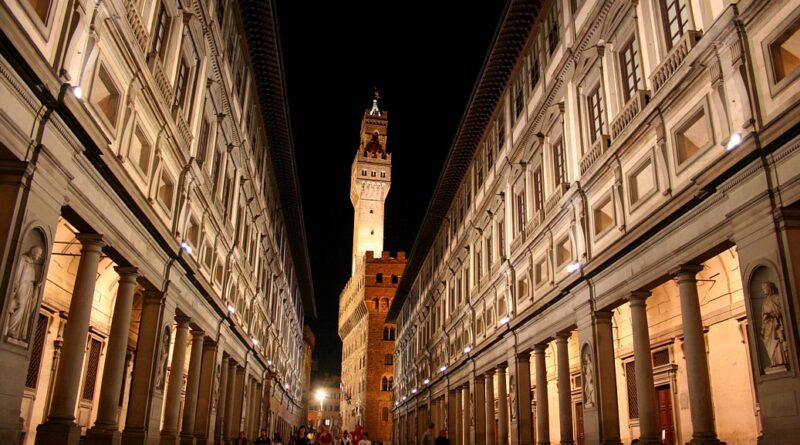A Journey Through Italy’s Most Iconic Museums and Landmarks
Italy, a country renowned for its rich history, stunning architecture, and unparalleled art collections, is a treasure trove for travellers seeking to explore its iconic museums and landmarks. From the grandeur of ancient Rome to the masterpieces of the Renaissance, Italy offers a diverse array of cultural experiences that are sure to captivate any visitor. This journey through Italy’s most iconic museums and landmarks will take you from the bustling streets of Rome to the artistic heart of Florence, offering a glimpse into the country’s storied past and vibrant present.
1. The Colosseum, Rome
No journey through Italy would be complete without a visit to the Colosseum, one of the most recognizable landmarks in the world. This ancient amphitheatre, which dates back to 70-80 AD, was once the site of gladiatorial contests, public spectacles, and dramatic performances. The Colosseum’s imposing structure, with its towering arches and intricate details, stands as a testament to the engineering prowess of the ancient Romans. Visitors can explore the Colosseum’s interior, including the underground chambers where gladiators and wild animals were once housed. A visit to the nearby Roman Forum and Palatine Hill offers further insight into the lives of the ancient Romans.
2. The Vatican Museums, Vatican City
Located within the heart of Rome, the Vatican Museums house one of the most extensive and impressive art collections in the world. Founded by Pope Julius II in the early 16th century, the museums feature works spanning from classical antiquity to the Renaissance. Among the most famous pieces are the Sistine Chapel ceiling, painted by Michelangelo, and Raphael’s Rooms, which showcase the artist’s mastery of fresco painting. The museums’ vast collection also includes ancient Roman sculptures, religious artifacts, and Renaissance paintings. A visit to St. Peter’s Basilica, the largest church in the world, is a must when exploring Vatican City.
3. The Uffizi Gallery, Florence
Florence, the cradle of the Renaissance, is home to the Uffizi Gallery, one of the most important and visited art museums in the world. The Uffizi Gallery’s collection traces the evolution of Italian art from the 13th to the 18th centuries, with an emphasis on Renaissance masterpieces. Visitors can admire works by some of the most celebrated artists in history, including Leonardo da Vinci, Michelangelo, Raphael, and Botticelli. Among the gallery’s most famous pieces is Botticelli’s “The Birth of Venus,” a stunning depiction of the goddess emerging from the sea. The Uffizi Gallery also offers breathtaking views of the Arno River and the historic Ponte Vecchio.
4. The Galleria Borghese, Rome
Situated within the lush gardens of Villa Borghese, the Galleria Borghese is a hidden gem in the heart of Rome. This museum houses an extraordinary collection of sculptures, paintings, and antiquities, many of which were acquired by Cardinal Scipione Borghese, a passionate art collector and patron. The Galleria Borghese is particularly known for its stunning sculptures by Gian Lorenzo Bernini, including “Apollo and Daphne” and “The Rape of Proserpina,” which showcase the artist’s ability to bring marble to life. The museum’s painting collection includes works by Caravaggio, Raphael, and Titian, offering a comprehensive overview of Italian art from the Renaissance to the Baroque period.
5. The Accademia Gallery, Florence
Another must-visit museum in Florence is the Accademia Gallery, home to Michelangelo’s iconic statue of David. This masterpiece of Renaissance sculpture, which stands over 17 feet tall, is a symbol of strength and beauty. The Accademia Gallery also features a collection of Michelangelo’s unfinished sculptures, known as the “Prisoners,” which offer a glimpse into the artist’s creative process. In addition to Michelangelo’s works, the gallery houses a rich collection of Florentine paintings from the 13th to the 16th centuries, including pieces by Botticelli and Ghirlandaio.
6. The Doge’s Palace, Venice
Venice, with its labyrinth of canals and stunning architecture, is home to the Doge’s Palace, a symbol of the city’s power and wealth during the Venetian Republic. This Gothic masterpiece, located in St. Mark’s Square, served as the residence of the Doge, the supreme authority of the Republic of Venice. The palace’s opulent interiors are adorned with frescoes, gold leaf, and intricate woodwork, reflecting the grandeur of Venice’s past. Visitors can explore the palace’s grand halls, including the Chamber of the Great Council, as well as the Bridge of Sighs, which connects the palace to the prison. The nearby St. Mark’s Basilica, with its stunning mosaics and Byzantine architecture, is another must-see in Venice.
7. The National Archaeological Museum, Naples
For those interested in ancient history, the National Archaeological Museum in Naples offers an unparalleled collection of artifacts from the Roman Empire. The museum is home to many of the treasures unearthed from the ruins of Pompeii and Herculaneum, including frescoes, mosaics, and sculptures that provide a vivid picture of life in ancient Rome. The museum’s Farnese Collection, which includes the imposing Farnese Hercules and the Farnese Bull, is one of the most important collections of ancient sculptures in the world. A visit to the nearby ruins of Pompeii offers a fascinating glimpse into a city frozen in time by the eruption of Mount Vesuvius in 79 AD.
8. The Uffizi Gallery: A Window into Renaissance Florence
As you journey through Italy’s iconic museums and landmarks, the Uffizi Gallery in Florence stands out as a crucial stop for anyone interested in the evolution of art and culture. Housing an impressive collection of Renaissance masterpieces, the Uffizi Gallery provides visitors with a comprehensive understanding of the artistic developments that took place in Florence, a city that played a pivotal role in shaping the course of Western art. The gallery’s extensive collection, from Botticelli’s ethereal “The Birth of Venus” to Leonardo da Vinci’s intricate “Annunciation,” offers a window into the minds of the artists who revolutionized art during the Renaissance. Whether you’re an art enthusiast or simply a curious traveler, the Uffizi Gallery is an essential part of any cultural journey through Italy.
Conclusion
Italy’s museums and landmarks offer a fascinating journey through the country’s rich history, artistic achievements, and cultural heritage. From the ancient ruins of Rome to the Renaissance masterpieces of Florence, each destination provides a unique insight into Italy’s past and present. Whether you’re admiring the grandeur of the Colosseum, exploring the treasures of the Vatican Museums, or marveling at the art within the Uffizi Gallery, Italy’s cultural offerings are sure to leave a lasting impression on any traveler.




